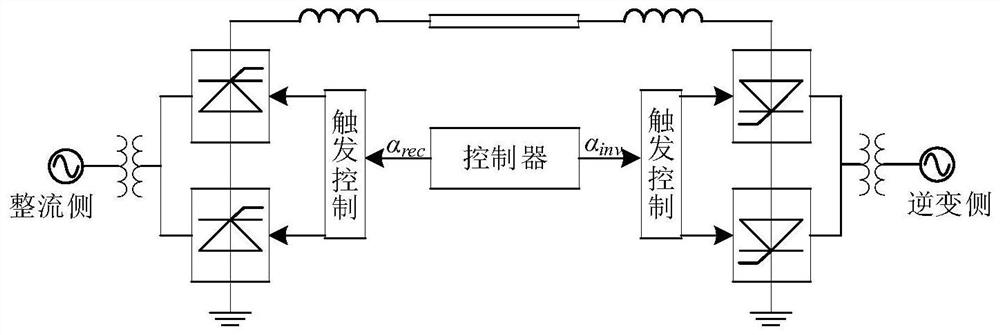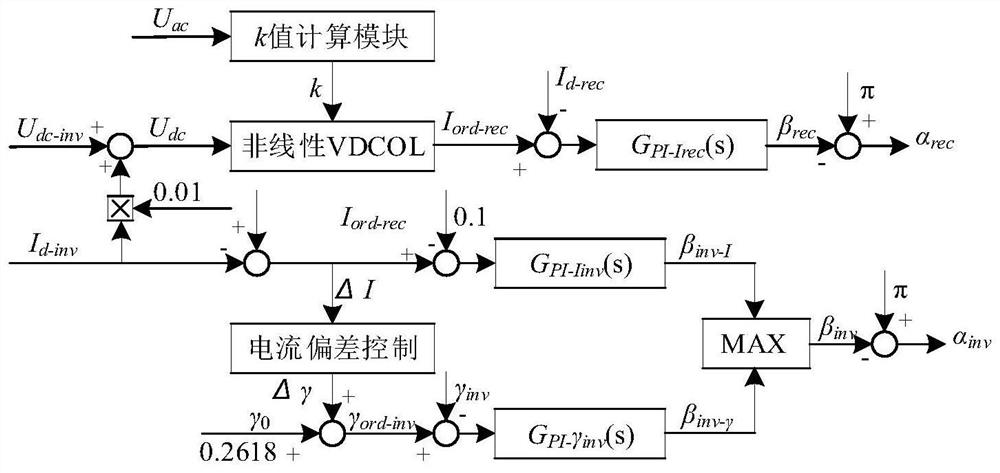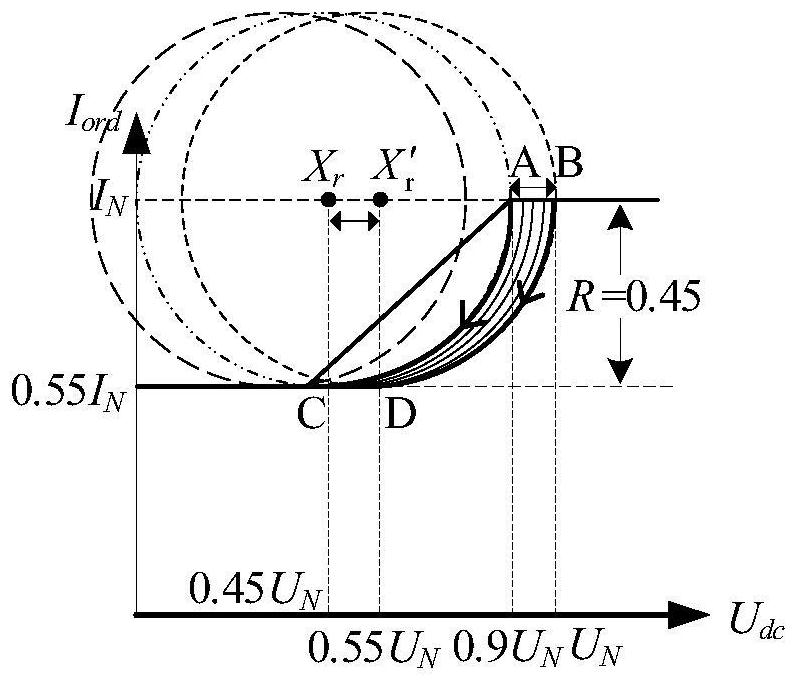HVDC Continuous Commutation Failure Suppression Method Based on Nonlinear vdcol
A commutation failure, non-linear technology, applied in output power conversion devices, power transmission AC networks, electrical components, etc., can solve the problems of slow response, low sensitivity, slow adjustment of inverter side voltage and DC transmission power, etc. , to achieve the effect of smooth change, enhanced sensitivity, and avoid increasing the current command
- Summary
- Abstract
- Description
- Claims
- Application Information
AI Technical Summary
Problems solved by technology
Method used
Image
Examples
Embodiment Construction
[0038] The overall structure of the HVDC system is as follows: figure 1 shown. The system mainly adjusts the transmission power and the voltage and current of the DC side through the trigger delay angle of the rectification side and the inverter side. Generally speaking, the control system of HVDC has various control functions such as constant current control, constant turn-off angle control, current deviation control and VDCOL control, and different control methods are selected by comparing and selecting units.
[0039] The VDCOL control in HVDC can only function after the voltage drops to a certain extent, and its control characteristics are also linear, so when a serious fault occurs in the system, its response is slow, resulting in slow adjustment of the inverter side voltage and DC transmission power , and then it is difficult to avoid continuous commutation failure in the system, so it is necessary to improve the traditional VDCOL control.
[0040] The nonlinear VDCOL ...
PUM
 Login to View More
Login to View More Abstract
Description
Claims
Application Information
 Login to View More
Login to View More - R&D
- Intellectual Property
- Life Sciences
- Materials
- Tech Scout
- Unparalleled Data Quality
- Higher Quality Content
- 60% Fewer Hallucinations
Browse by: Latest US Patents, China's latest patents, Technical Efficacy Thesaurus, Application Domain, Technology Topic, Popular Technical Reports.
© 2025 PatSnap. All rights reserved.Legal|Privacy policy|Modern Slavery Act Transparency Statement|Sitemap|About US| Contact US: help@patsnap.com



